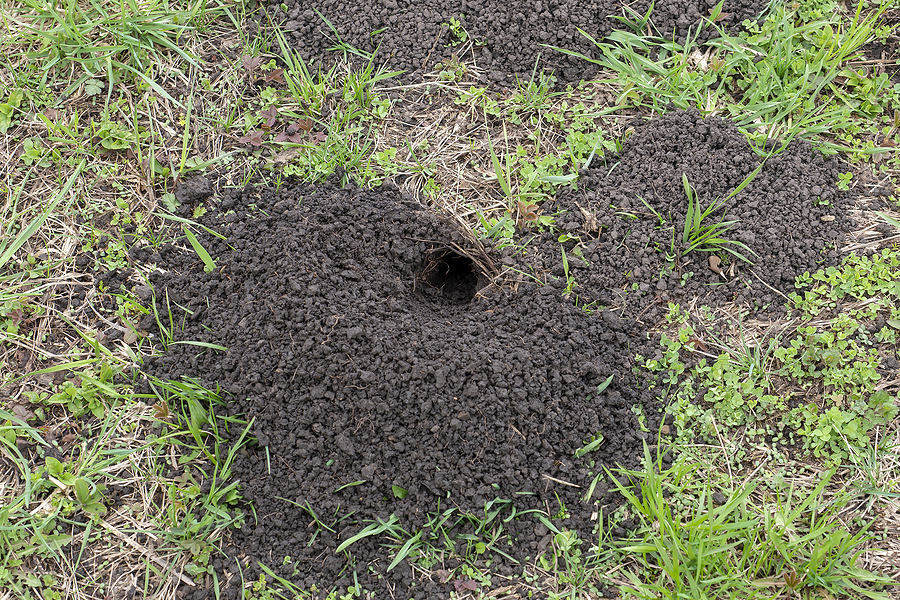Uninvited subterranean guests in your yard can cause more than just a headache for homeowners and gardeners. The silent yet destructive passage of ground moles beneath your carefully nurtured lawn can lead to a maze of tunnels and unsightly mounds that mar the landscape and provide a dangerous invitation to further pest issues.
Understanding the elusive mole and implementing strategic prevention and repair tactics is crucial for maintaining a beautiful, resilient garden. This comprehensive guide will walk you through the necessary steps to tackle the mole menace head-on.

Understanding Ground Moles
Ground moles are fascinating yet enigmatic creatures. They spend their lives tunneling below our feet, rarely emerging above ground. Their mysterious nature makes them a challenge for gardeners to control. Despite the difficulties they present, understanding moles is the first step toward cohabiting with them—or persuading them to relocate.
Mole Behavior and Characteristics
Moles are mammals that are perfectly adapted for a life spent burrowing. Their cylindrical bodies are designed for an existence where they push through and compact soil with extraordinary efficiency. Their front feet are highly specialized, with broad, spade-like structures that can move rapidly through loose and packed earth. Despite common misconceptions, moles are solitary creatures except during mating and nurturing of their young, which happens in the spring and early summer.
Signs of Mole Presence in the Yard
Recognizing the presence of moles in your yard is essential for taking action. The clearest signs are the numerous long, ridged molehills that they create as they dig, which are often confused with gopher mounds. Moles construct two types of tunnels—a network of shallow feeding tunnels that create the classic ‘mole hills’ on the surface and deeper runways used for travel, which are evident by a slight ridge on the ground.
Yard Mole Prevention Methods
Preventing moles from establishing tunnels in the first place is the best approach. Understanding the reasons for their presence and implementing strategic deterrence methods can save you time and effort in the long run.
Natural Repellents and Deterrents
Moles are sensitive to certain odors and tastes, which can be exploited to discourage their tunneling. Substances like castor oil, which is unpalatable to moles, can be applied to your lawn. Other natural repellents include planting mole-resistant bulbs such as daffodils and marigolds. While not foolproof, these methods are a gentle way to encourage moles to seek out other territories.
Physical Barriers and Traps
Creating barriers that prevent moles from accessing your garden can be highly effective. Installing mole mesh under raised beds or in areas with frequent mole activity can be a valuable deterrent. For more active mole removal and control, strategically placed traps can help reduce the mole population on your property. However, trapping requires knowledge and care to prevent harm to other wildlife and pets.
Proper Lawn Maintenance Practices
Keeping your lawn healthy and well-maintained discourages moles. Moles love to feed on insects such as earthworms and grubs, which are found in abundance in moist, well-fertilized soil. Regular aeration of your lawn to reduce soil compaction, minimizing irrigation in areas not in use by plants, and the appropriate use of insecticides to control potential mole food sources are all helpful practices.
Repairing Mole Damage
When moles have already done their damage, it’s crucial to act swiftly to restore the integrity of your garden and prevent further issues.
Identifying and Assessing Damage
Mole tunnels and mounds are not only unsightly but can also uproot plants, disturb root systems, and potentially create hazardous conditions in walking areas. Thoroughly inspect your yard to understand the extent of the damage.
Steps to Restore the Lawn and Garden
To restore your garden after a mole infestation, begin by leveling molehills and filling in tunnels. Consider reseeding or re-sodding bare areas, as moles disturb the soil, which can kill existing grass and plants. Ensure that you’re using the appropriate type of soil in the damaged areas to aid in healthy growth.
Planting Tips for Mole-Damaged Areas
Plants and trees in mole-damaged regions may require additional care to establish themselves. Incorporate organic matter into the soil before planting to provide nutrients and improve soil structure. Use a fertilizer with lower nitrogen content to encourage root development rather than top growth. Mulching is also a great way to protect new plants and keep the soil consistently moist.
Conclusion
Ground moles may seem like an insurmountable problem, but with a clear understanding of the issue and a proactive approach, you can keep your lawn and garden free from their destructive tunnels. Regular maintenance and the use of repellents, barriers, and careful repairs are essential elements of an effective mole management strategy. By staying vigilant and taking the necessary steps, you can reclaim your yard from the mole menace and maintain a healthy, inviting landscape.
Don’t let a mole’s mysterious nature keep you from addressing the damage they cause. Take action today and enjoy a more resilient, mole-resistant garden tomorrow. Contact Modern Wildlife Control at 317-847-6409 for prompt and professional 24 hour critter control in Indianapolis, Indiana for moles, today.
Related Posts:
Animal Control Tips for Moles on the Golf Course
Unearthing the Secret: Effective Strategies for Yard Mole Control
Top 3 Methods to Get Rid of Moles in the Yard
